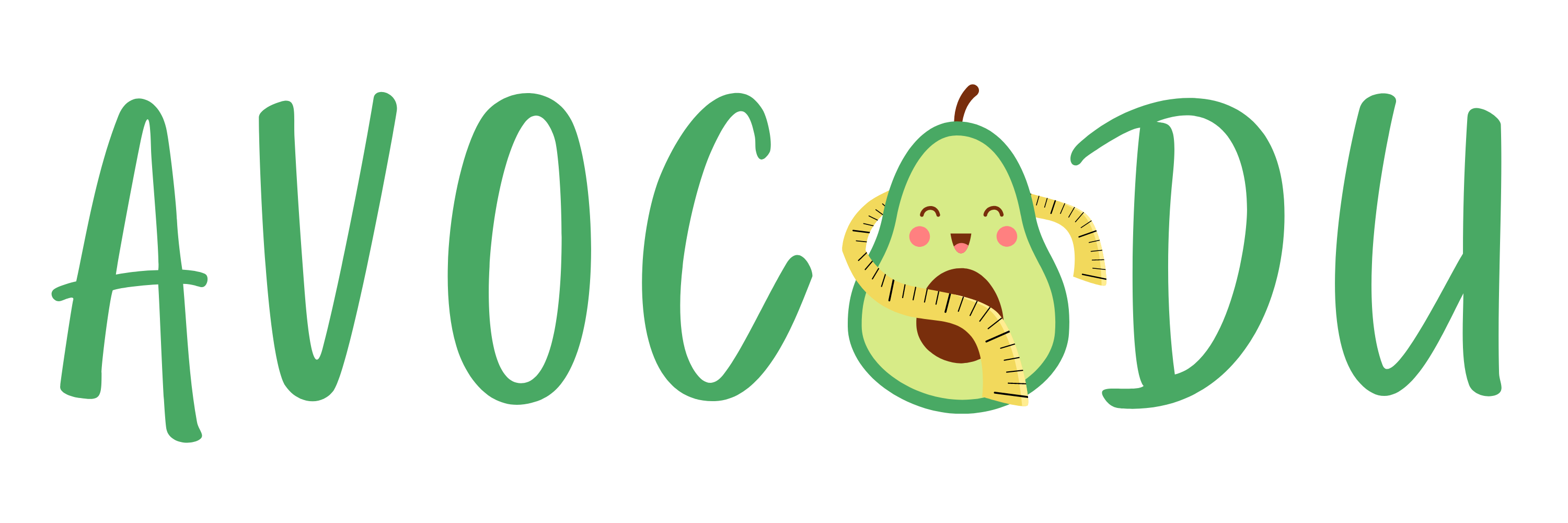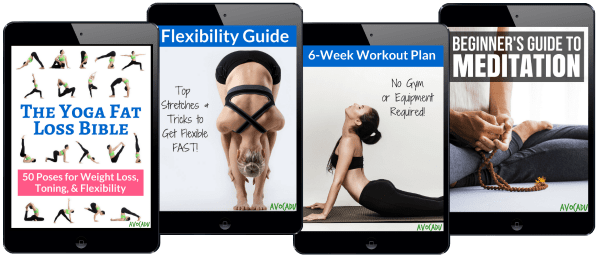10-Minute Morning Yoga Routine for Beginners
Did you know that a morning yoga routine can help you improve brain function, lower stress levels, and increase flexibility? And these benefits of yoga are just the beginning!
Yoga can transform your body and your mind through regular practice, and that’s true for people of all skill levels. It doesn’t take an expert yogi to reap the benefits of daily exercise and relaxation.
The longer you commit to yoga, the more health benefits you’ll notice. Lowered blood pressure, improved lung capacity, and improved sexual function are a few notable items on the list of perks.
Yoga may also help relieve pain in certain muscle groups, as well as ease anxiety and improve balance.
If you haven’t yet embraced yoga and all its benefits, try our 10-minute morning yoga routine to ease into daily practice.
Starting the morning with a yoga workout can help you feel relaxed and ready for your day.
This post may contain affiliate links, which helps keep this content free. Please read our disclosure for more info.
1. Child’s Pose
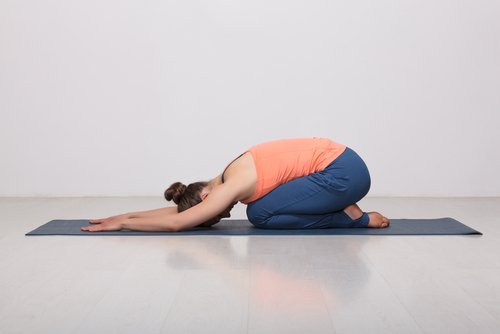
Starting off with Child’s Pose gives you an excellent morning stretch, without demanding too much movement if you’ve just rolled out of bed.
Loosen up your joints and muscles with this resting position, preparing to build up to more demanding poses. Keep the pose for anywhere from three to five minutes for the best result.
According to Do You Yoga, there are five main benefits of the Child’s Pose for active yogis. Part of the relaxing and calming effect is due to placing your head down on the mat.
Another benefit is the position’s ability to aid digestion. The nature of the scrunched-up pose means that your stomach is resting on your thighs, applying pressure in an almost massaging way.
The position also helps stretch your back, the perfect introduction to your day if you’ll be sitting at a desk for much of it. Similarly, the stretch opens up your hips, another victim of desk sitting.
Finally, because it’s a resting position, Child’s Pose is an easy start for your workout, waking you up without making you wish you could crawl back into bed.
[Make sure you do child’s pose at the end of your workout as well or between any more difficult poses when your body needs a rest.]
2. Mountain Pose
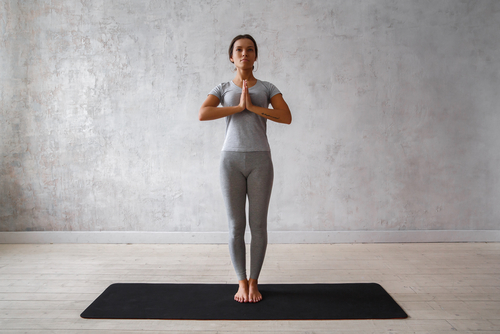
Set your posture for the day with the Mountain Pose, which will help you become fresh and alert for your day. If you struggle with maintaining upright posture, working on this position daily can help.
Additional benefits of the Mountain Pose are increased balance as you learn to control your body, strengthened abdominal muscles, and improved digestion.
Try to hold this pose for around a minute, maintaining your breathing throughout. Because it is a yoga pose for beginners, this asana is accessible and modifiable to suit different levels of yogis.
Pay close attention to your technique for optimal benefits with the Mountain Pose, keeping your spine erect and evenly distributing your weight as Soulful Arogya recommends.
3. Downward Dog
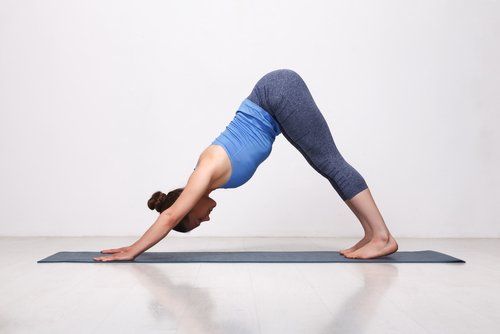
The Downward Dog is a basic component of many yoga routines, and for a good reason.
As Self reports, Downward Dog possesses health benefits such as the ability to build bone density, revitalize athletes, eliminate stiffness, and improve circulation.
If you work a desk or office job and struggle with fatigue, soreness, or a lack of flexibility, Downward Dog is one tool for breaking out of chair-induced discomfort.
There are also modifications to the pose, making it ideal for beginners through experts.
The key to an effective Downward Dog stretch is focusing on correct form. Avoiding injury by keeping your core engaged keeps you from collapsing.
The video below illustrates proper form for both beginners and intermediate yogis. Anyone who has tried the pose knows that it’s deceptively simple by appearance, but not so in practice (as many yoga asanas are).
4. Standing Forward Bend
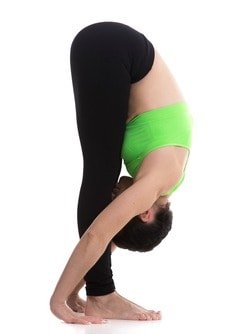
If you experience back pain or just need a good stretch first thing in the morning, you’ve probably done a casual Standing Forward Bend before. The key to this position is protecting your back.
Placing your feet shoulder-width apart and parallel sets you up for a deep and reaching bend. This serves to loosen up your hamstrings and help stretch your back at the same time.
This is a helpful exercise for any body type, but particularly for athletes who deal with sore or tight hamstrings. It also aids in digestion, plus relieving stress and calming your brain, according to Active.
Other helpful benefits include reducing mild depression and reducing anxiety since the pose helps you connect with your body and balance yourself.
Bend your knees slightly and place your chest and belly on your thighs. Hold your elbows while in position, keeping your eyes open to keep your balance.
You can also sway from side to side and bend and straighten your knees to encourage hamstrings to loosen up.
When starting out, hold the pose for a minute or so, as long as you can tolerate. Work up to maintaining it longer, even up to ten minutes or so. Focus on your breathing and relax while deepening the stretch.
5. Warrior
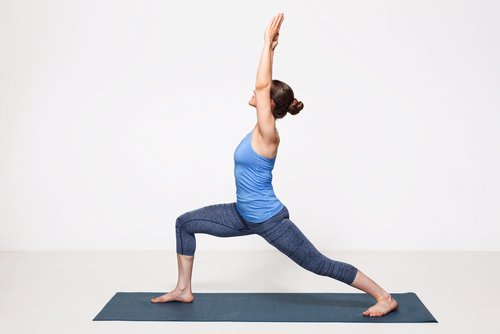
The basic Warrior pose is beginner-friendly, but the later stages of the asana are increasingly difficult.
Depending on your level of expertise, you might choose to try related poses afterward. Aim for holding any Warrior position for roughly one minute.
In addition to the basic warrior pose, there are also Warrior II and III, plus Reverse Warrior, Retreating Warrior, and Humble Warrior. Ekhart Yoga explains each variation and gives instructions on the specifics.
Noting that the pose is complex with multiple alignment cues, Elkhart Yoga discusses the nature of the pose to help us overcome ego and develop strength.
They also suggest being mindful of your pelvis tilt, lifting your abdomen rather than tucking your tailbone down. Other Warrior positions demand a higher level of strength and flexibility.
Warrior II helps teach you about your body’s alignment, focusing on the relationship between knee and ankle. Find your comfort zone in this position to ensure the safety of your knee and ankle joints.
You can also get ready for handstands by practicing Warrior III, which demands a higher level of balance while keeping your core engaged.
Practice deep breathing with the Reverse Warrior to release tension in muscles surrounding your rib area, while stretching legs and arms.
The Humble Warrior has you stretching your neck and shoulders, while the Retreating Warrior uses a deep side lunge for flexibility and core strength.
If you are looking for a routine to do in your own home, make sure to take a look at our Yoga Fat Loss Bible.
It comes with everything you need to get started, including a 50-fat burning yoga poses with photos and instructions, 6-week workout plan, meditation guide, flexibility guide, and more!
Get started losing weight with yoga today!
If you enjoyed this 10-minute morning yoga routine or have any questions, please feel free to leave a comment below!
